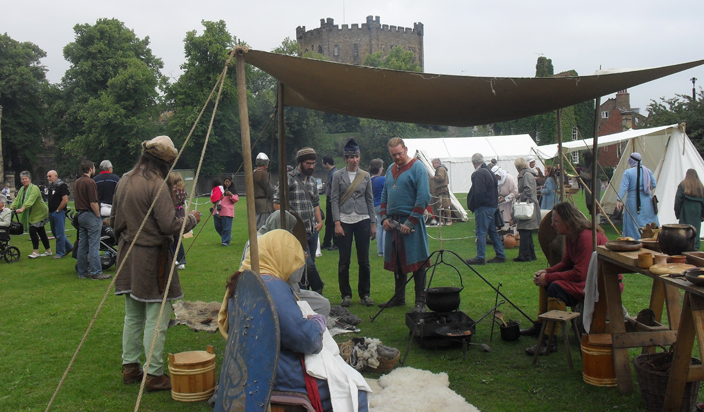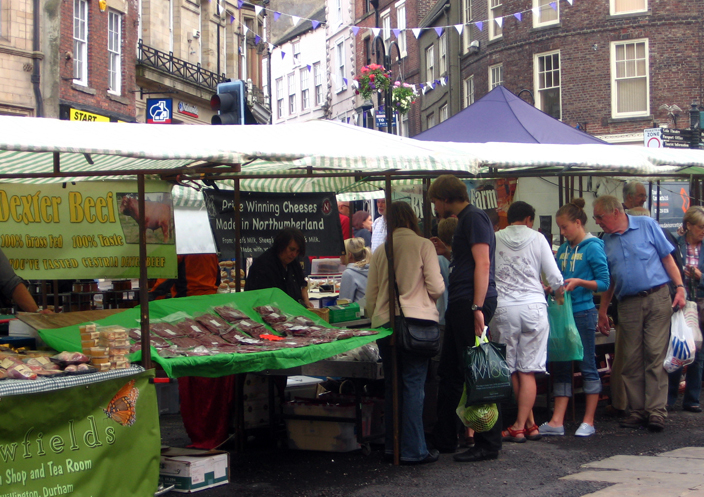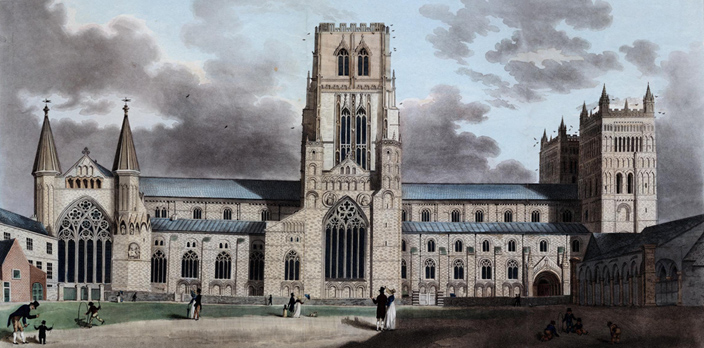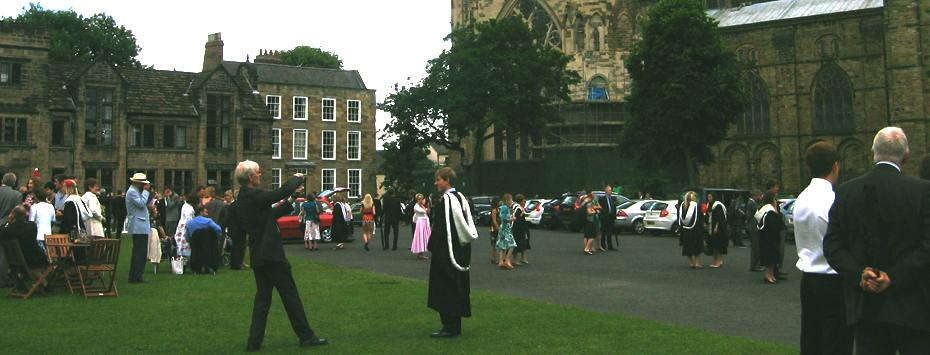What is today known as Palace Green was originally the city market place – probably then bustling and rather chaotic.
Around the green are a variety of buildings from different periods, many of which are key to understanding both the responsibilities and the privileges of the Durham Prince Bishops. These include Cosin's Almshouses, Cosin's Hall, Moneyer's Garth, Palace Green Library, and the Music School.
Others, such as Abbey House, incorporate important remains of medieval fortifications that have since been lost.
The Pemberton Building and the Master's House, on the other hand, are significant mainly because of their role in the life and history of Durham University.

Palace Green in the late eleventh century was probably bustling with activity. This Norman reenactment group on the green in 2010 gives an indication of what it may have been like. (Especially if you can ignore the modern-day visitors, the grass, and the fact that the Castle keep looked different then).
Early Days: Fire and Filth
Palace Green probably started off life as the city marketplace. As an area in the shadow of a major building project - the Cathedral, it would have been a hub of activity. Hundreds of labourers and craftsmen employed on the construction of that building would have had money to spend - at least on day-to-day provisions such as food and supplies.
In the 12th century the Bishop, Flambard, decided to clear the area, according to a chronicler, so that “the church should neither be endangered by fire nor polluted by filth.”
The market place was moved north, to its current location, and the former inhabitants of the old market area relocated in a new borough created there.
From then on, the green seems to have been a space that was less public in spirit. It was a forecourt to the Prince-Bishop's institutional buildings, his residence (the Castle), and of course, the Cathedral.

Durham Marketplace today – it has been in the same place since the twelfth century, when Bishop Flambard moved it away from Palace Green to protect his Cathedral from 'fire and filth'.
From “Le Place” to “Palace (Green)”
An account written in 1388 states that:
Between the lower gates of the castle and the graveyard of the abbey was a space called ‘le Place’ containing by estimation two acres with the houses intended for the offices of the Chancery, Exchequer, and Receipt; a hall for the Pleas of Justice; a granary; a large grange; and various other rooms on the west side of the said space pertaining to the old gaol before the lord built anew the tower called ‘le Northgate’ at the entrance to the castle where his gaols now are by his ordinance; and a house for coining money built on the east side of the said space.
With time, the French place was Anglicised to become palace, which is the name the green retains to this today.

Palace Green in 1821, depicted as a place for leisurely promenades.
Further Information
For a more detailed history of Palace Green, and geophysical information, please click here.

